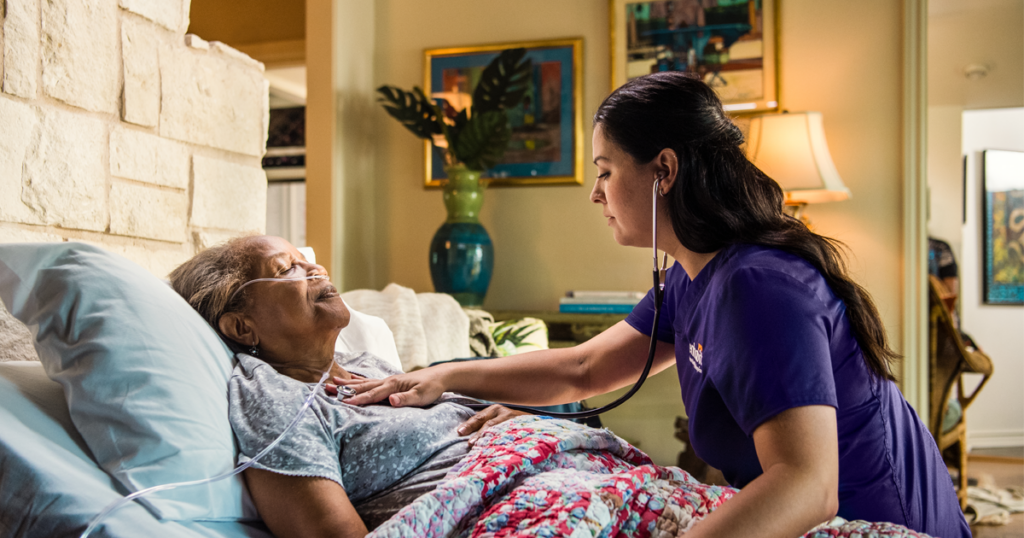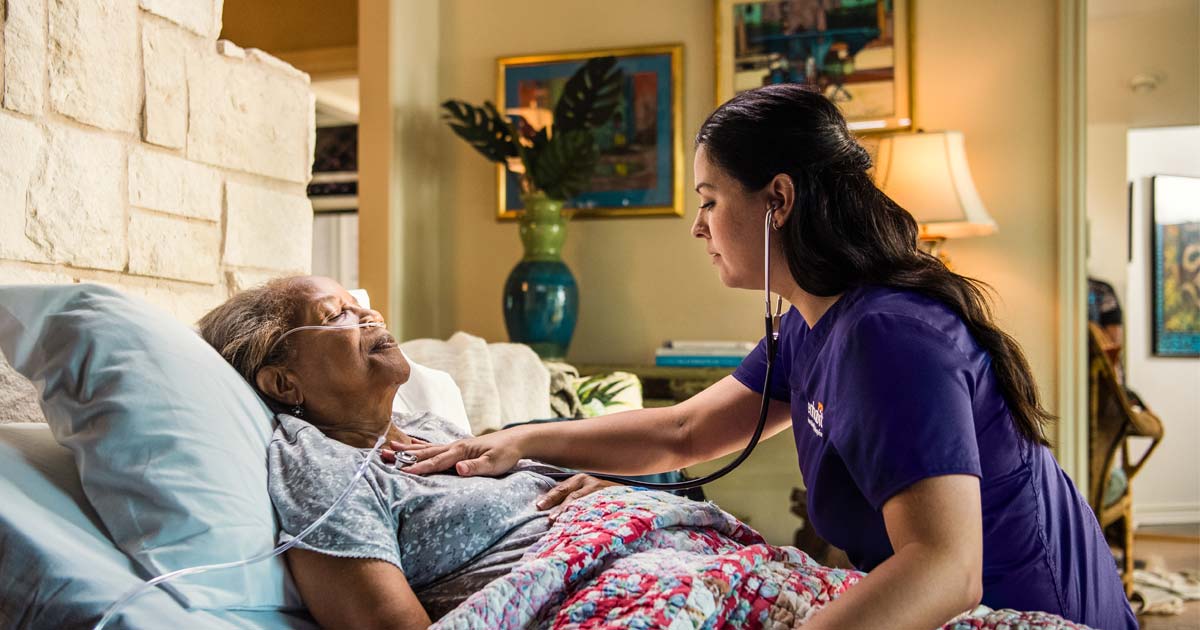When people hear the word “hospice,” their first thought may be that the end of life is near. But receiving hospice care doesn’t necessarily mean that death is imminent. The main goal of hospice is to maximize a patient’s quality of life as they near the end. Plus, the question of “how long can you be on hospice?” differs based on each person’s medical condition or diagnosis.
It’s common to feel uneasy or have questions about the hospice process and timeline. Below are a few helpful things to know about how long you can be on hospice.
Hospice is not only for the last few days of life
According to the National Hospice and Palliative Care Organization, over half of hospice patients are on service for 30 days or less. However, patients facing a terminal illness and their loved ones can receive care and support for six months or longer depending on the course of the illness.
In order to receive hospice care, a patient must have a physician certify that their prognosis, or life expectancy, is six months or less, and the patient must choose to stop treatment for their disease and treat only the symptoms. The certification regarding the patient’s prognosis is often a reasonable estimate based on available information but may not account for all factors. It’s possible a patient can live longer than that and therefore could receive hospice care for longer than six months, as long as their physician continues to monitor and recertify their condition.
While it is possible for patients to live beyond six months, it doesn’t happen often due to differing circumstances such as a person’s hesitancy to begin hospice or a physician’s uncertainty about a prognosis.
Patients and their loved ones often wish they had known about and started hospice sooner to help them understand what to expect during the end of life, control pain and symptoms, and receive needed support.

Can patients on hospice ever improve?
The Journal of Palliative Medicine found that less than 10% of hospice patients live beyond six months.
It is not common for patients’ conditions to improve while on hospice care. Since hospice care stops all curative treatments, it’s likely the patient’s condition will worsen. However, with pain management and increased time with loved ones, patients can focus on what’s most important to them as they near the end of life and remain in the comfort of home.
While uncommon, there are instances where patients have “graduated” from hospice care, meaning they no longer had a life expectancy of six months or less and therefore decided to start treatment again. It is important to keep in mind that while a patient may feel better on hospice, it is highly unlikely that they will make a full recovery.
You can always change your mind
Hospice is not a permanent decision: it is a choice.
Choosing hospice means that you are consenting to stop treatment in the moment. However, you can change your mind at any time and begin receiving treatment again.
For example, say you decide to begin hospice care but then your granddaughter gets engaged and you want to do everything possible to make it to her wedding – you can make the choice to resume curative treatment.
While physicians and hospice workers can help gather information and start conversations, the decision to start or stop hospice is not up to them. It ultimately comes down to the patient’s wishes and goals of care.
Choosing hospice doesn’t mean giving up hope
Although hospice care is reserved for people with terminal illnesses, choosing to stop curative treatment doesn’t have to be thought of as giving up hope. Instead, it can symbolize the redefining of hope.
Hospice builds positive personal and spiritual connections. Many family members look back on the hospice experience with gratitude, wishing their loved one would have received end-of-life care sooner.
Additionally, hospice provides medication for symptom and pain control so that patients can live with comfort and dignity, not in fear. This allows patients to spend time with their loved ones, and receive care that is consistent with their wishes. When a patient’s pain levels are managed, they are often able to better enjoy that time spent with their loved ones and make eternal memories.
The support that a hospice team can provide during the end-of-life journey is beneficial to the family as well, even after a patient passes. Providers like Enhabit Home Health & Hospice not only help loved ones navigate the end-of-life journey, but they also provide up to 13 months of grief counseling and bereavement resources after a patient’s passing.
How do I know the end of life is near?
While it isn’t possible to know for sure when someone is about to pass, there are signs and stages you can look out for. Knowing these end-of-life stages may help you better understand the end-of-life journey and how you can best support someone as they go through each stage.
The transformation that occurs at the end of life is similar to that of a caterpillar to a butterfly, with each stage of the transformation representing what happens in the last few months to the last few hours of someone’s life. Learn more about the unique physical, mental and emotional signs of each transformational stage here.
If you have any additional questions regarding end-of-life care, it may help to speak to a hospice provider. Enhabit is here to help you find the best care for you or your loved one. Click here to contact us.
Social Share
At Enhabit our patients are our number one priority. From providing the latest medical practices to building deep personal connections, we’re focused on upholding every patient’s dignity, humanity and sense of control on their health care journey.
Home health
Our home health services give patients access to the care they deserve in the comfort of their own homes. From disease and injury management to recovery from surgery, our clinicians help patients confidently achieve their healthcare goals.
Hospice care
Our hospice care services place importance on the comfort of every patient living with a terminal illness. Our caring professionals are dedicated to providing not just physical care, but spiritual and emotional support to every patient and their loved ones.






